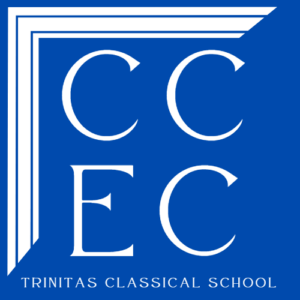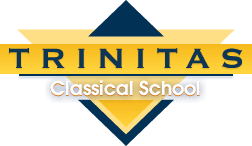 In this post, we continue our discussion of STEM subjects with a look at Trinitas science education. Throughout their study of the world that God created “good,” our students are encouraged in their wonder at His amazing creativity and overflowing generosity. They are encouraged to expand their understanding of that world with a program of study rooted in the scientific tradition–a tradition that is inquiry-based and very “hands-on.” Trinitas students don’t just listen to lectures or read about science, they do science.
In this post, we continue our discussion of STEM subjects with a look at Trinitas science education. Throughout their study of the world that God created “good,” our students are encouraged in their wonder at His amazing creativity and overflowing generosity. They are encouraged to expand their understanding of that world with a program of study rooted in the scientific tradition–a tradition that is inquiry-based and very “hands-on.” Trinitas students don’t just listen to lectures or read about science, they do science.
Students begin by thinking about what they know about a given topic. Then they are given the opportunity for hands-on exploration. They go on nature walks and keep notebooks for sketching. They interact with eggs and incubators, seeds and soil, batteries, wires, and bulbs, rocks and minerals, meal worms and cow eyes. By engaging in hands-on scientific inquiry, they learn to make observations, ask questions, experiment, develop theories, make predictions, collect and analyze data, and communicate and discuss their ideas. They also learn to be able to give up what may have been naïve theories and to apply their more advanced knowledge to new contexts and real-life situations. They build creative, analytical, problem-solving, and communication skills in the process.
It should be noted that not all inquiry-based science programs are created equal, and hands-on activities have their limits. In the 1960’s, some educators, following cognitive psychologist Jean Piaget, were advocates of child-directed, pure discovery models of learning. Since that time, however, many educators have come to recognize what classical educators have believed all along–that children need significant guidance and explicit instruction to learn. Left mostly to their own direction, students may have a lot of fun engaging (a.k.a. playing) with materials, but they may take up a lot of time and not actually learn very much. Our science program integrates well both experiential learning and didactic instruction. We recognize that lectures and books, to be really useful, require an experiential foundation (a lecture on electricity makes more sense when one has spent some time with batteries, wires, and bulbs). And we also recognize that exploration, to produce effective learning, requires teacher-guidance.
Like other subjects at Trinitas, science is taught in a developmentally appropriate way that aligns well with the Trivium. In the grammar stage, students typically work on skills of observation. They identify trees. They watch mealworms become beetles and waxworms become moths. They investigate the properties of solids and liquids, seeing how they move and can be used. They experiment to determine if toothpaste is a solid or a liquid. At this stage, students typically observe one attribute at a time; for example, they sort rocks by color or size, but not both at once. Later, they are able to organize data based on more than one characteristic. Students may begin studying the weather by looking at variables such as temperature, wind, and precipitation. Later, in the logic stage, they investigate the relationship of variables; for example, they consider how wind influences perceived temperature in “wind chill” factor. As students move into this stage of deductive reasoning, they are able to classify plants and animals into subordinate categories, e.g., all crocodiles are reptiles, but not all reptiles are crocodiles. They are able to design controlled experiments and discover the relationships among variables–during a module on time, they may investigate the number of pendulum swings per minute by changing variables like the length of the string or mass of the pendulum. Logic stage students dissect cow eyes and build dioramas depicting air pressure systems. They consider hypotheticals and construct new creatures that might fit an assigned ecosystem. They cultivate their rhetoric skills by organizing, communicating, and defending their conclusions in writing scientific reports, creating posters with drawings and graphs, and giving oral presentations to defend the research they’ve conducted.
If a science curriculum does not consider developmental stages, then a mismatch between what children are capable of and what they are being asked to do can occur. If a school simply points teachers to scientific education standards and tells them to meet them, there will likely be repeats and/or gaps across the grades. In either situation, students may not learn as much as they are able to or enjoy science as much as they could. The science curriculum at Trinitas is an intentional and coherent K-8 program that maps nicely onto the stages of the Trivium. Test results and the experience of our graduates consistently show that students finish Trinitas with strong scientific skills; and, if you asked them, most would say they find science fun too.
In our next post, we’ll continue our discussion of STEM at Trinitas with a look at the subject of logic. “Where’s the “L” in STEM?” you might ask. Read our post to find out.
© ALP
